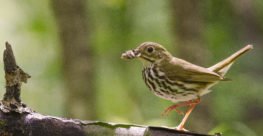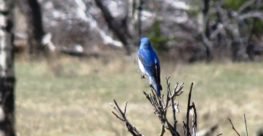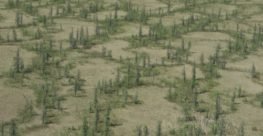Reports
Explore our reports based on wildlife acoustic data. All reports are available for download and include reports to clients, peer-reviewed journal articles, graduate student theses, technical reports, and other documents that use Bioacoustic Unit data.

Classification threshold and training data affect the quality and utility of focal species data processed with automated audio recognition software
Elly KnightAug 2018


Long-term Changes in Boreal Forest Occupancy Within Regenerating Harvest Units
L. Leston, E. Bayne, F. SchmiegelowFeb 2018

Using Bioacoustics to Study Vocal Behaviour and Habitat Use of Barred Owls, Boreal Owls, and Great Horned Owls
J. Shonfield, E. BayneJan 2018

Recommendations for Acoustic Recognizer Performance Assessment with Application to Five Common Automated Signal Recognition Programs
E. Knight, K. Hannah, G. Foley, C. Scott, R. M. Bringham, E. BayneNov 2017

The Effect of Industrial Noise on Owl Occupancy in the Boreal Forest at Multiple Spatial Scales
J. Shonfield, E. BayneNov 2017

Boreal Songbird Response to Understory Protection Harvesting in Alberta, Canada
C. CharchukSep 2017

Use of an Acoustic Location System to Understand Songbird Response to Vegetation Regeneration on Reclaimed Wellsites in the Boreal Forest of Alberta
S. WilsonSep 2017

How to Most Effectively Use Autonomous Recording Units When Data are Processed by Human Listeners
E. Bayne, M. Knaggs, P. SólymosMar 2017

Rusty Blackbird (Euphagus carolinus) Population and Distribution Data in the Athabasca and Cold Lake Oil Sands Region of Alberta Using Automated Recording Units (ARUs)
C. Nordell, E. BayneMay 2017

Autonomous Recording Units in Avian Ecological Research: Current Use and Future Applications
J. Shonfield, BayneJun 2017

Boreal Bird Abundance Estimates Within Different Energy Sector Disturbances Vary with Point Count Radius
E. Bayne, L. Leston, C. L. Mahon, P. Solymos, C. Machtans, H. Lankau, J. Ball, S. Van Wilgenburg, S. Cumming, T. Fontaine, F. Schmiegelow, S. SongApr 2016

Experimentally Derived Detection Distances from Audio Recordings and Human Observers Enable Integrated Analysis of Point Count Data
D. Yip, L. Leston, E. Bayne, P. Solymos, A. GroverJun 2017

Sound Attenuation in Forest and Roadside Environments: Implications for Avian Point-count Surveys
D. Yip, E. Bayne, P. Solymos, J. Campbell, D. ProppeFeb 2017

Habitat Selection at Different Scales for a Declining Aerial Insectivorous Bird as Determined by Autonomous Recording Technology
E. Knight, E. BayneMay 2017

Evaluating Habitat Use and Disturbance Effects on two Anuran Amphibians
N. AnnichMay 2017


Developing Standard Methods for Bioacoustic Data Collection and Processing
H. Lankau, E. Bayne, S. Morrison, D. Farr, A. MacPhailFeb 2016

Fact sheet: Monitoring Rare Animals in Alberta’s Boreal Forest
L. Monk, M. KohlerOct 2014



Ecological Monitoring Committee for the Lower Athabasca (EMCLA) Annual Report 2013-14
EMCLAApr 2014

2013 Yellow Rail Monitoring Plan for the Lower Athabasca Planning Region
E. Bayne, P. Knaga, T. Muhly, L. Neufeld, T. Wiebe.Aug 2014



Owl Monitoring Using Wildlife Acoustics ARU Recorders versus Standard Playback Methods
E. BayneSep 2014


Ecological Monitoring Committee for the Lower Athabasca (EMCLA) Annual Report 2012-13
EMCLAApr 2013